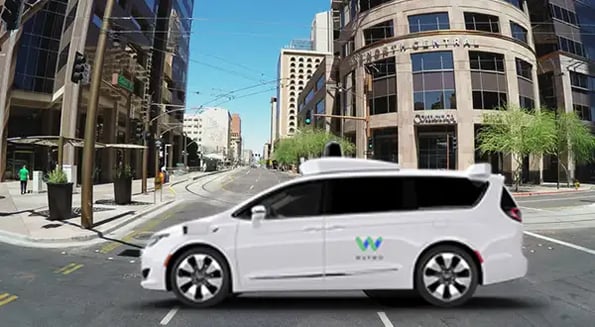After 9 years of secretive R&D and more than 10m miles of testing, Google’s self-driving car subsidiary Waymo will finally sell self-driving rides to the public in December. Not on a closed course, not for engineers only — on the open road with regular civilians in the passenger seat.

Analysts estimate that, as the first player in the market, Google’s unnamed autonomous ride-hailing company will be worth more than $80B before it even launches (Uber is valued between $70B and $120B).
A new name for a new game
Google’s self-driving taxi service will launch under a new brand name in Phoenix, where Waymo has been testing its autonomous cars with 400 volunteer “Early Rider” families since 2017 (Google has tested cars in at least 24 other cities).
Since Waymo is literally millions of miles ahead of the self-driving competition (the company hit 10m test miles while GM’s rival Cruise is likely shy of 1m), its new commercial self-driving company won’t compete against auto-automakers, but against rideshare giants.
Like Uber, but without the disgruntled drivers
Using an app that resembles Google Maps, commercial riders will be able to summon an autonomous ride between any 2 points in a 100 sq. mile area around Phoenix, 24/7.
Initial prices for the services will be competitive with Uber and Lyft, and backup drivers will ride along in some cars to “ease customers into the service,” according to Bloomberg.
The race is on, and everyone is speeding except Google
GM’s Cruise hopes to launch in 2019, Zoox in 2020, Tesla and Nissan shortly thereafter, and Uber is renewing its self-driving permits after accidentally killing a pedestrian in Arizona.
But despite the accelerating competition, Google has a commanding lead: Waymo has already ordered more than 80k cars and partnered with Walmart, Avis, and AutoNation to slowly expand its autonomous business.
With Uber stuck in timeout and self-driving competitors millions of miles (and billions of dollars) behind, slow and steady Google will probably be the first to offer you a robo-ride.
The only question is: Will the robots let us sit in the front seat?

